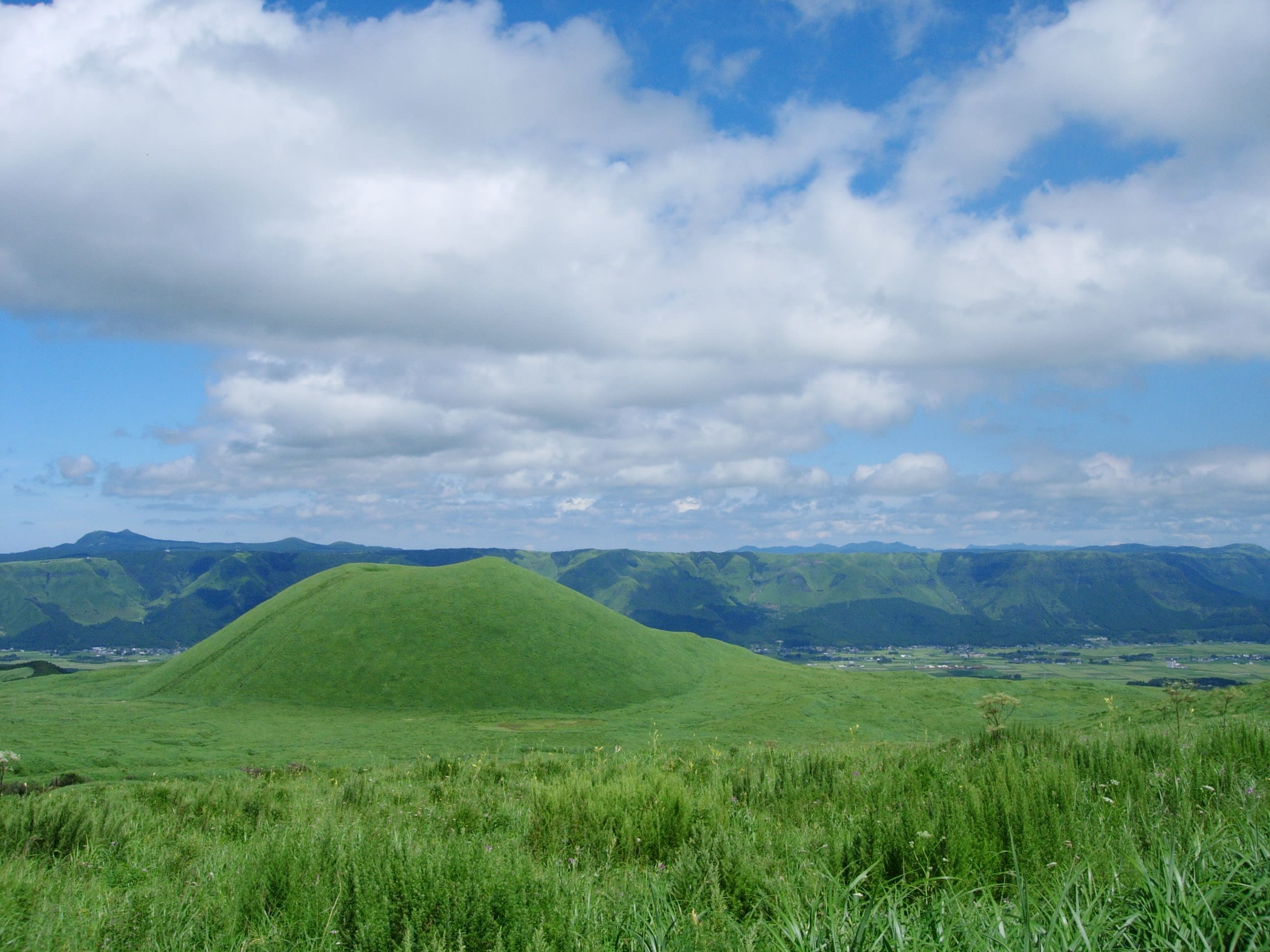A Caldera of Enormous Scale
In the south of the park, the Aso caldera, one of the largest caldera sites in the world, measures 18km from east to west and 25km from north to south. At the center stand the five peaks of Mt. Aso, rising up from the surrounding flat caldera floor. Viewed from a distance, these are said to resemble a sleeping Buddha. The highest peak, Mt. Takadake, is 1,592m. Takadake is flanked by the active Mt. Nakadake, whose central crater is filled with an acidic blue pool from which steam regularly rises. The crater here can be approached on foot, by car, or by ropeway (closed at the moment), meaning different aspects of the rugged landscape can be observed close-up. The Aso area also features an almost perfectly shaped volcanic cone, Komezuka, the broad grasslands of the Kusasenri ga hama, the otherworldly barren landscapes of the Sunasenri ga hama, and the high caldera walls that surround them.

From Volcanic Peaks to Fertile Plateaus and Sacred Mountains
Located in the middle of the park, the Kuju mountains offer a majestic and diverse landscape. From the volcanic peaks, including the highest point in Kyushu — Mt. Nakadake, standing at 1,791m above sea level — to the Handa, Chojabaru and Kuju plateaus, formed from ancient volcanic ash and debris, now almost completely covered in grassland plains, these areas form the contrasting landscapes that Kuju is famous for. The area’s highland marshes, Tadewara and Bogatsuru, have both been recognized as Ramsar Sites of International Importance. They are low-lying waterlogged areas in the mountain range that have evolved as unique habitats and are home to an abundance of rare plants and animals.
Mt. Tsurumi, in the north of the park, has been considered a sacred mountain since ancient times. Mt. Yufu, on the other hand, is the source of many of the natural hot springs for which Beppu and Yufuin are famous. Mt. Tsurumi has a number of small statues of deities, Buddhas, and shrines at its summit, which is accessible by ropeway or on foot. On clear days there are panoramic views of Beppu Bay, Mt. Yufu, and the Kuju mountains.

Life in the Park
The ecology of the park is generally classified into three categories: areas in which volcanic gases are emitted, forests that spread over the base of mountains, and managed grassland. In areas of high volcanic gas emissions, very few plants and animals can survive. The forests, including both primary and secondary forests where trees have spread across areas of ancient grasslands, are home to a wide variety of plant and animal life.
The grasslands of the park make up most of the area. They are a unique feature of the parkland and consist of both native, semi-natural areas of meadow, pasture, reed beds and marshes, and areas where grasses and plants have been introduced and cultivated. The grasslands support over 600 species of plants, a thriving agricultural crop and livestock industry (having been adapted to specific needs by the local people). With invaluable water resources, this area is known as the ‘Reservoir of Kyushu’, with natural underground rainwater reserves in the porous volcanic ground providing pure, mineral-rich water used by no less than five million people in Kyushu.

Each spring, the grasslands are subject to controlled burnings, known as noyaki. This is done in order to keep shrubs and trees from spreading across the grasslands and to preserve their rich natural habitats. Without this human intervention, the grasslands would be taken over by forest, and diversity would be lost.
Aso-Kuju National Park showcases the contrasts typical of Japan’s volcanic landscapes. From dense forest to rugged mountains, lush marshes, hidden hot springs (onsen) and pristine waters, the park offers stunning views and a wealth of flora and fauna to enjoy in every season of the year.



